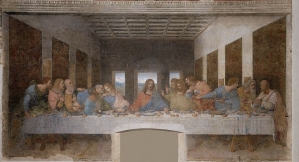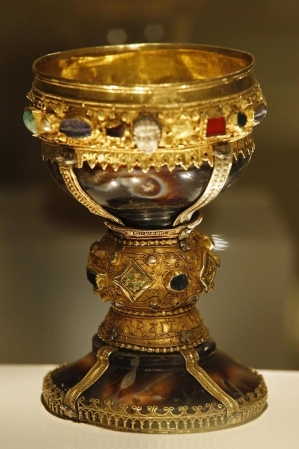
A goblet on display in a Spanish church was removed by curators on Friday after the cup was believed to be the true Holy Grail.
Leon University medieval history lecturer Margarita Torres and art historian Jose Manuel Ortega del Rio co-authored a book that was released last week detailing the evidence that they thought proved that this particular cup was the real Holy Grail that Christ used at the Last Supper. When news got out, crowds of people swarmed to the church in Leon, Spain to see the holy relic for themselves.

The Spanish historians spent three years researching and compiling proof of the Holy Grail for their book entitled Los Reyes del Grial (The King of the Grail). According to the authors, the chalice at the Leon church is actually made up of two cups, with the 2,000-year-old Holy Grail contained inside, hidden since the 11th century. The antique cup, known as the Chalice of Doña Urruca, is made of agate, gold and onyx and encrusted with precious stones. It was known as the goblet of the Infanta Dona Urraca, daughter of Fernando I, King of Leon from 1037 to 1065.
Torres and del Rio found the secret of the Holy Grail's presence within the goblet by accident while researching Islamic remains in the Saint Isidore basilica. They came upon two medieval Egyptian documents that detailed the course of the Holy Grail to Cairo when it was looted from Jerusalem by Muslims. Despite Spain's Muslim rule throughout much of the medieval era, the cup somehow came into the possession of Christian King Ferdinand I of Castile.
Scientific dating procedures back up the historians' claims by estimating that the cup was made between 200 BC and 100 AD. While the two researchers admit that there are no actual records proving that the chalice touched Christ's lips, they insist that this is the cup that early Christians always revered as that grail used during the Last Supper.
"The only chalice that could be considered the chalice of Christ is that which made the journey to Cairo and then from Cairo to León - and that is this chalice," said Torres.
Despite this evidence, the two historians admit that there are 200 supposed Holy Grails in Europe alone, but their book debunks the authenticity of many of these.







